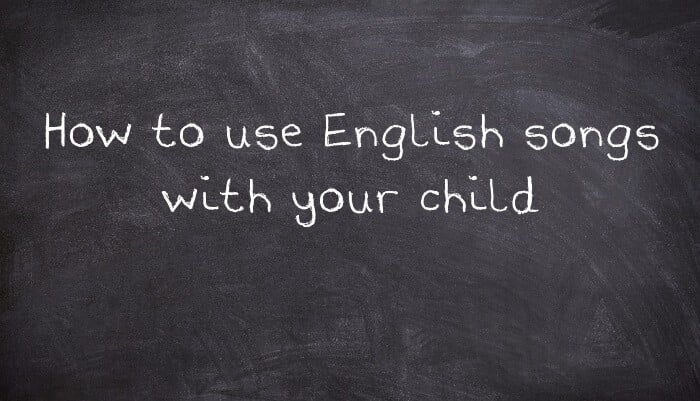Children obviously love songs, and if you catch them early enough and do it the right way, they will definitely love listening to, singing and acting out to English songs too. This article gives six key tips on how to make sure that happens and to ensure that they learn English through those songs.
When to start using English songs with your child
Very young children are quite happy to listen to and sing along with songs in any language, so it’s best to start exposing your kids to English songs from as young as possible. In fact, some people believe that they will be attracted to songs which they have heard through their mother’s stomach before they are born! Note that some of those kids may still reject English songs and only want to listen to things they fully understand later on (often around six or seven years old), but they will have still learnt something from those years of English music and will tend to come back to English later.
How to pick English songs for your child
The most important thing is that children enjoy listening to and singing along to English songs, so it’s generally best if they choose the songs themselves. They will often choose ones which are also most suitable for their present level of development, including things like repeating a lot, including related actions, having simple language, and going well with pictures. However, as kids don’t usually understand the songs when they first decide they like them, they often also choose songs with lots of nonsense words and even unsuitable language like swearing. You could therefore expose your kids to songs from a suitable source like Super Simple Learning or the British Council’s Learn English Kids in the hope that those are the song that they want to hear again and again.
Another choice you might want to make for your child is what varieties of English the songs are in, for example mainly British English if you are planning to go to the UK, or as wide a variety of accents are possible if you want to open them up to communicating with people from many countries in English.
How to make sure that kids understand English songs
As my own daughter has shown with songs in Russian, Korean, etc, kids are capable of learning every word of a song without ever understanding one word of them. This can also be useful if it makes them like English, gets them used to English pronunciation and eventually motivates them to find out what the song means. However, it’s obviously better if they understand some or all of the words that they are singing along to, acting out, etc. Most traditional songs like Wheels on the Bus have many YouTube videos and a selection of related picture books too, and its good to use both if you can. These can also be combined with the third major way of showing meaning, which is with gestures such as windscreen wipers moving.
Using other languages with English songs
Translation can be useful in language learning, and there is nothing wrong with answering questions like “What does ‘conductor’ mean?” in your own language. However, I would avoid translating the whole song for your child, showing the video with subtitles in L1, etc, as that will take away the unique strengths of learning through songs, and might mean that they only remember the L1 meaning rather than the English words. Similarly, kids might well be attracted to songs that they already know in L1 like Twinkle Twinkle Little Star or Silent Night and will understand the English version well that way, but will probably only remember the L1 version or even mix the two up.
How to help kids remember English songs
Songs tend to be very memorable anyway, but the tips above about repetition, videos, picture books and gestures will also help songs stick in your children’s heads for longer. You can also find quite a lot of worksheets with vocabulary from the songs etc, but these will just make the process boring and make children less likely to listen to the song again, so are usually counterproductive. Similarly, pushing kids to listen again, do the gestures, etc, won’t have as good effect in the long term as letting them do what they want with the songs.
When to move onto other English songs
Kids tend to like listening to songs, watching YouTube videos of songs, etc, long after they know every word and so don’t seem to be gaining much from it, so it’s worth trying to move them onto a new favourite song. Perhaps the most obvious way is with a CD or playlist that includes their favourite song and other songs that they might like, such as some more action songs, more songs about transport, or more songs by the same group.
